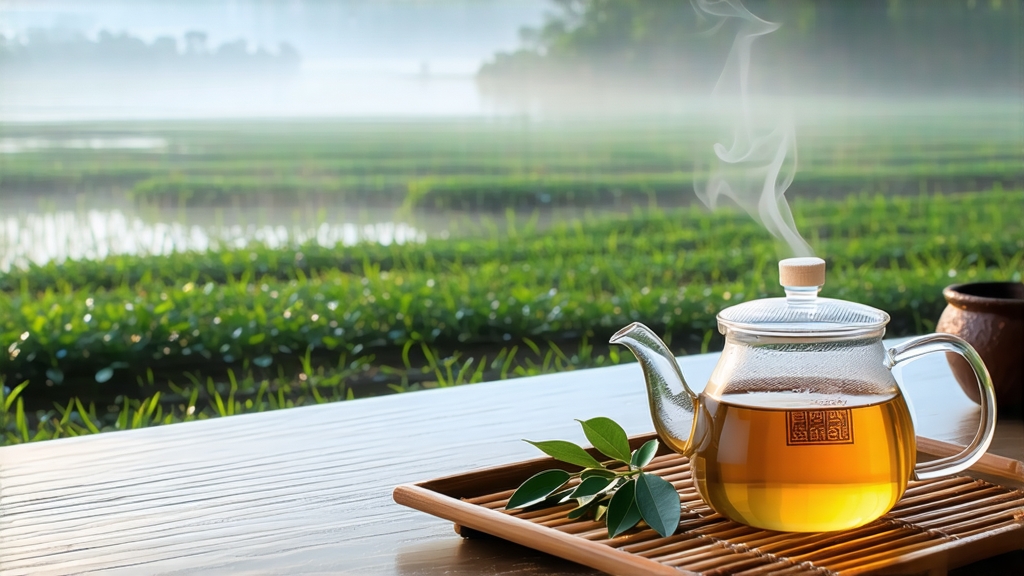
Biluochun, whose name translates literally to “Green Snail Spring,” is one of China’s ten most celebrated teas, yet it remains a quiet revelation for many newcomers to the world of green tea. Grown on the mist-locked, fruit-tree-dotted hills that rise from the shores of Taihu Lake in Jiangsu Province, this tea is prized for its tiny, spiral-shaped leaves, an intoxicating fruit-floral aroma, and a cup that glows like pale jade. To understand Biluochun is to step into a story that begins in the Tang dynasty, winds through imperial courts, and ends—at least for the moment—in your own teapot.
History & Legend
The first written record of Biluochun appears in the Tang dynasty treatise “The Classic of Tea,” but the tea did not acquire its modern name until the late Ming. Local legend claims a tea picker ran out of space in her basket and tucked fresh leaves between her breasts; body heat prompted an unexpected fragrance that attracted the attention of monks and magistrates alike. A more reliable tale credits the Kangxi Emperor, who visited Lake Tai in 1699 and, enchanted by the tea’s “alarmingly green” color and “startlingly fragrant” aroma, rechristened it from the earthy “Xia Sha Ren Xiang” (“Scary Fragrance”) to the more elegant “Biluochun.” Either way, the tea entered the Qing imperial tribute list and has never left the pantheon of Chinese greens.
Terroir & Harvest Calendar
Taihu’s micro-climate is the invisible co-author of Biluochun’s flavor. The lake stores and reflects solar heat, creating morning fog that filters UV light and slows photosynthesis. The result is an increased concentration of amino acids—especially L-theanine—yielding sweetness and umami. Around the 17th parallel, March temperatures hover at 12–15 °C, coaxing the first buds to swell. Picking begins on the Qingming festival (early April) and lasts barely three weeks. Only the terminal bud plus the adjacent unfolding leaf are plucked, amounting to roughly 90,000 shoots per 500 g of finished tea.
Varieties & Grading
Although the name is protected by national origin status, two horticultural cultivars dominate: the small-leaf “Dongting” clone and the slightly larger “Fuding” clone. Within these, seven commercial grades exist, but international buyers usually encounter three:
- Supreme (Special Grade One): silver-white tips exceed 60 %, length under 1.5 cm, infusion almost colorless yet explosively fragrant.
- Grade One: tips 35–50 %, length 1.5–2 cm, balanced aroma and body.
- Grade Two: tips <35 %, includes a subtle vegetal bite, ideal for everyday drinking.
Crafting the Spiral
The transformation from fragile leaf to tight spiral is a ballet of heat, pressure, and timing carried out within twelve hours of harvest. The steps are:
- Withering: buds are spread 2 cm deep on bamboo trays and rested for 60–90 minutes in shade; moisture drops from 76 % to 68 %.
- Fixation (kill-green): leaves are tumbled in a drum pan at 160 °C for 3–4 minutes, deactivating polyphenol oxidase and locking in the green hue.
- Primary rolling: while still at 50 °C, the leaves are hand-rubbed along bamboo slats for 12 minutes, breaking cell walls and initiating the curl.
- Secondary rolling & spiral forming: temperature is lowered to 38 °C; the master presses a palmful of leaves in a clockwise motion against the slat, coaxing the iconic snail shape. This 15-minute step demands intuition: too tight and the leaf will fracture, too loose and the aroma dissipates.
- Final drying: gentle hot-air flow at 65 °C reduces moisture to 5–6 %. The finished tea resembles tiny jade snails, silvery pekoes glinting like sea-foam.
Chemistry in the Cup
Laboratory analysis of Special Grade Biluochun reveals 4.2 % free amino acids, 14.7 % catechins, and 0.9 % caffeine. The unusually high ratio of amino acids to polyphenols explains the tea’s hallmark sweetness and low astringency. Aromatic volatiles include linalool (lavender), geraniol (rose), and (